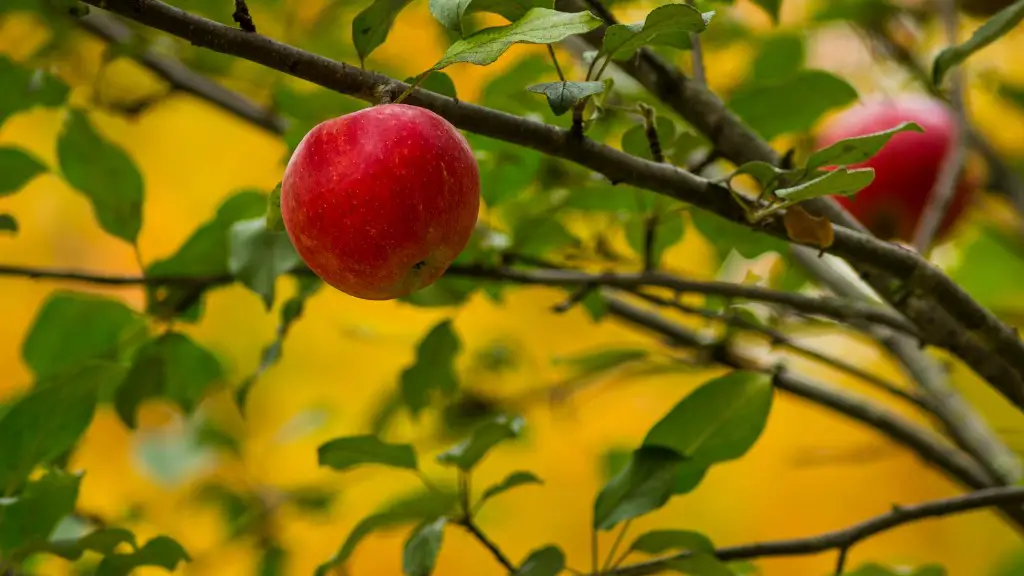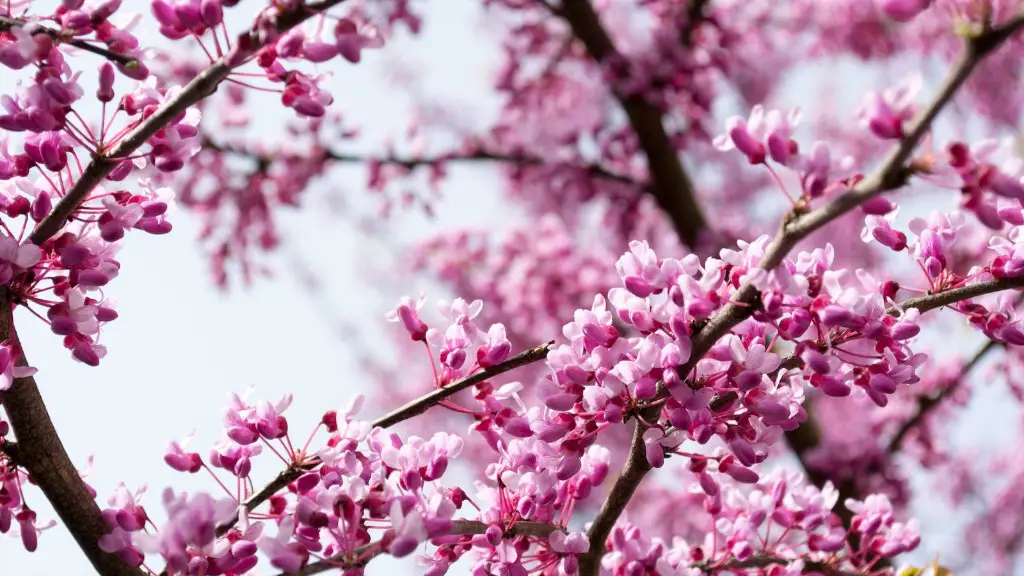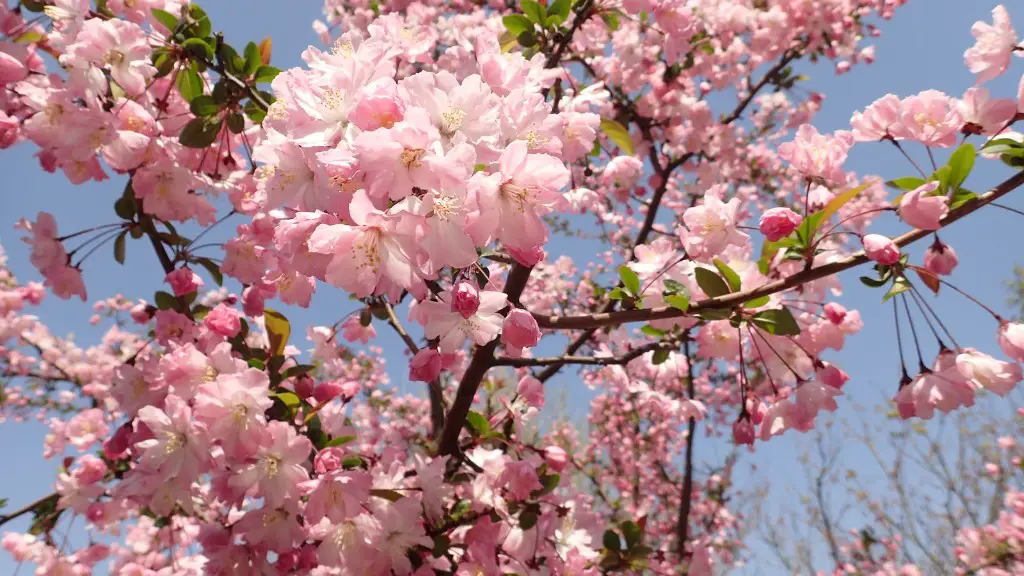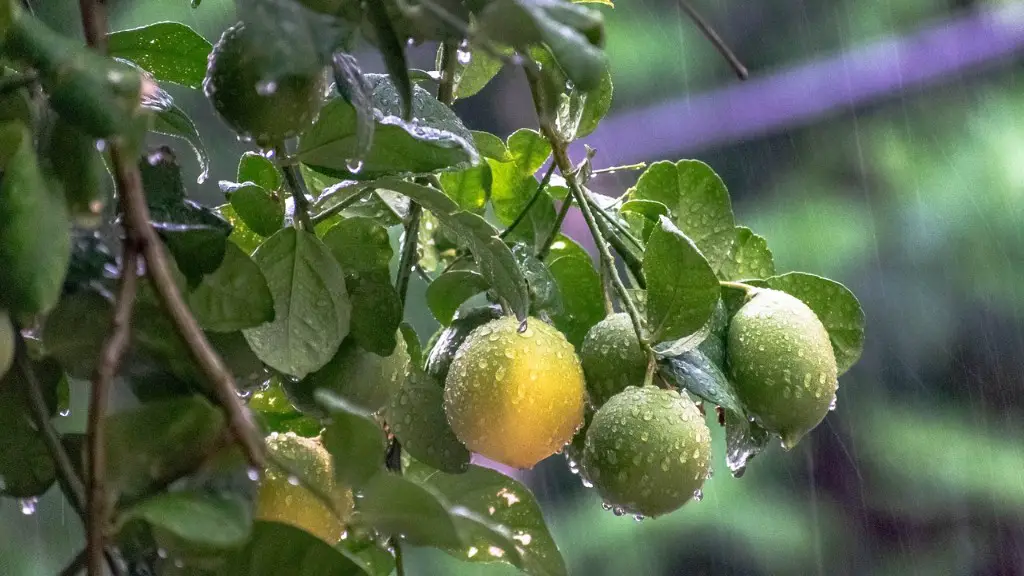September is an ideal time to plant apple trees, provided the gardener takes a few special steps. gardening becoming increasingly popular, many people are eager to get their hands dirty and start their own fruit orchard. Planting an apple tree in September allows the gardener to capitalize on the shorter days and cooler temperatures. Plus, selecting a variety of apple tree that works with the climate and soil type means that the success rates of the tree’s growth and health increase exponentially.
In order to ensure the best possible chance of success when planting a new apple tree in September, the gardener needs to prepare in advance. Tilling the soil ahead of planting is necessary to ensure proper aeration, remove weeds, and prepare the area. In addition to this, fertilizing the soil with compost or manure is a great way to further prepare the area for the tree.
When selecting an apple tree, it’s important to consider what type of climate and soil the tree will be grown in. Many trees may not be best suited to the region, and therefore may not survive if planted in the wrong season. Make sure to check with a local nursery to determine which varieties are right for the area.
Once the soil is prepared and the tree is selected and purchased, the actual planting process is fairly straightforward. Dig a hole twice the width of the pot and just as deep. Water the hole to loosen the soil and help the tree roots get established. Place the tree in the hole and fill it with soil, making sure to pack the soil firmly around the roots.
If possible, mulch the tree with a layer of straw or wood chips. This will help retain moisture, keep the roots cool and protect them from frost. Once the tree is planted, it’s important to continue to monitor it for proper hydration as well as general health.
Fertilizing an Apple Tree in September
Fertilizing an apple tree in September is essential to ensure that the tree is getting the nutrients it needs to thrive. To do this, a slow-release fertilizer specifically designed for apple trees should be applied in the spring or late summer. When selecting a fertilizer, make sure to consider the soil type and climate, as different products may be best suited for different conditions.
The type and amount of fertilizer that should be used depends on the type of soil, the size of the tree, and the age of the tree. If a soil test has not been conducted ahead of time it is a good idea to do one, as the numbers from the test will give an indication of how much fertilizer should be applied. In general, a slow-release nitrogen-rich fertilizer should be used as it will help improve the soil structure and stimulate microbial life, both of which are important for healthy apple trees.
Once the fertilizer has been selected and the amount determined, the application process should begin. Apply the fertilizer to the soil, spread out the material, and then lightly water it into the soil. As with any fertilizer, it is important to keep it away from the trunk and roots of the tree.
When fertilizing an apple tree in September, it is important to remember to not over-fertilize or apply too much of the material at one time. Doing so can cause the tree to suffer from nutrient burn, so it is best to err on the side of caution and apply a small amount at a time. If in doubt, it is always best to err on the side of caution when it comes to fertilizing.
Pruning an Apple Tree in September
Pruning an apple tree in September is a great way to ensure that the tree remains healthy and productive for many years. Pruning should begin when the tree is young and continue for many years as the tree matures. Properly pruning the tree will ensure a nice, balanced structure and will help to ensure that the tree is not prone to diseases or other issues.
When pruning an apple tree in September, it’s important to be aware of what types of pruning are needed and why. For example, heading back is used to maintain the overall size and shape of the tree, while thinning out is used to open up the canopy and increase airflow. This is particularly important in the fall when temperatures start to cool and pests are more likely to move in.
In general, it is best to prune the tree before the leaves fall in early autumn, as it will be easier to see and access the branches. Be sure to use bypass pruners rather than anvil pruners, as the anvil pruners can create jagged cuts that cause tissue damage to the tree. Additionally, always prune from the outside of the tree, removing any dead or diseased branches.
It is important to remember that pruning can be stressful for a tree, so always leave enough healthy growth and never remove more than a third of the tree at any given time. If done properly, pruning will benefit the health of the tree in the long run and will help ensure that it produces plenty of crisp, delicious apples.
Watering an Apple Tree in September
Watering an apple tree in September is crucial to its overall health and success. Established apple trees typically require one to two inches of water per week, depending on the weather conditions. Watering should be done in the morning, as this gives the tree the chance to absorb the moisture before evaporating in the heat of the day. Additionally, any rain that falls should be taken into account when watering as it can have an impact on the tree’s overall watering needs.
In order to ensure that the tree is watered thoroughly, it is best to use a soaker hose or other type of drip irrigation system. These devices allow water to slowly and evenly water the tree’s roots, which is important for providing the tree with the moisture that it needs to remain healthy. If using a hose, make sure to not direct the stream of water directly at the tree’s trunk as this can lead to damage.
The key to watering an apple tree in September is consistency. Apple trees should be watered once a week during periods of drought. If the weekly watering is consistently skipped, the tree may suffer from water stress and die. Additionally, when conditions are especially dry, it may be necessary to water the tree twice weekly to ensure that it has enough moisture.
Finally, it is important to note that over-watering an apple tree can be just as harmful as not watering. Too much water in the soil can cause root rot and other issues, so it is important to always take care to not overwater. If in doubt, it is generally better to under-water the tree than to over-water it.
Protecting an Apple Tree in September
Protecting an apple tree in September is essential to ensure it remains healthy and produces plenty of fruit in the years ahead. It is important to take steps to protect the tree from pests, diseases, and other environmental factors as this will help it to remain healthy.
The first step in protecting an apple tree is to inspect it regularly for any signs of disease or pests. Be sure to look for any changes in the leaves, branches, or trunk. Additionally, keep an eye out for any signs of pests such as insect eggs or webs. If any signs of pests or diseases are noticed, it is important to take steps to address the issue as soon as possible in order to prevent any further damage.
In addition to inspecting the apple tree for pests and disease, it is also important to take steps to protect it from the elements. This includes covering the apple tree with a tarp or other type of material if it is to be exposed to extreme cold or heat. Additionally, mulching around the base of the tree can help to protect the roots from the elements.
Finally, it is important to water the apple tree properly in order to ensure that it remains healthy. Apple trees typically require one to two inches of water per week, depending on the weather conditions. Watering should be done in the morning, as this gives the tree the chance to absorb the moisture before evaporating in the heat of the day.
Preventing Animals from Eating Apples in September
Preventing animals from eating apples in September is essential to ensuring a good harvest. Unfortunately, there are a variety of animals that enjoy snacking on apples, including birds, squirrels, raccoons, and deer. In order to keep these critters away from the apples, it is important to take a few steps.
First, it is important to keep the tree pruned and tidy. When the tree is well-maintained, there is less room for animals to hide in the branches and fewer areas that can be damaged by their claws. Additionally, it is important to ensure that any surrounding vegetation is trimmed away from the tree to ensure that the animals can’t climb it for easy access to the apples.
Another tip for keeping animals away from the apples is to use bird netting or mesh netting around the tree. This type of netting is designed to allow light and water to pass through, but will still keep the animals out. Additionally, it can be used year round and provides an effective barrier between the animals and the apples.
Finally, it is important to make sure the area surrounding the tree is clear of any debris or food that may attract animals. Discourage them from the area by keeping it clean and free of any tempting snacks. Doing so will help to reduce the likelihood of animals coming to the area to snack on the apples.





